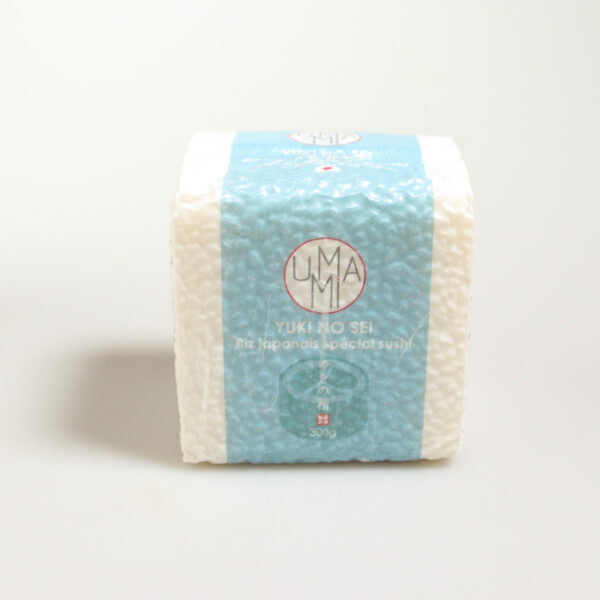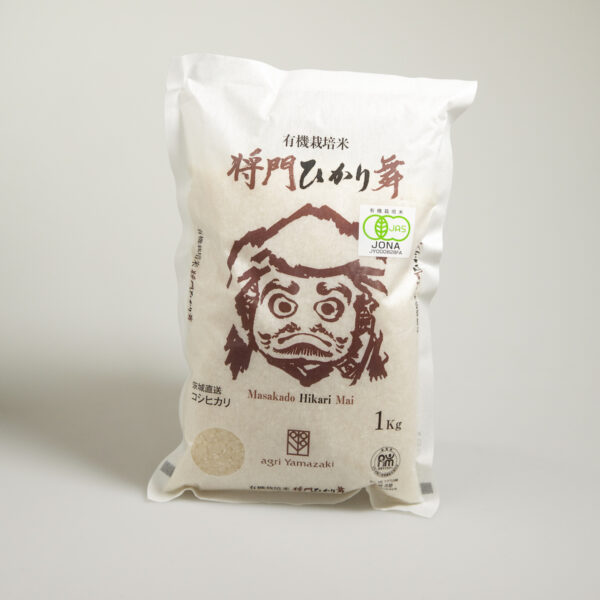Japanese white rice
Showing all 4 results
Products
-
“Yuki no sei” sushi rice
5.10 € Add to basket -
Masakado Organic Rice
Producteur : Agri Yamazaki 22.00 € Add to basket -
Koshihikari Rice
Producteur : Agri Yamazaki 12.00 € Add to basket -
Fukumaru Japanese Rice
Producteur : Agri Yamazaki 13.00 € Add to basket
All Japanese food revolves around Japanese rice: so anyone who wants to get to grips with traditional Japanese “washoku” cuisine needs to start by understanding the importance of rice… And most importantly, learn how to cook it. Thankfully, Japanese rice is not only a delicacy but also a fascinating subject.
Japanese rice, known as Japonica or Sinica, is thought to have been domesticated in central China nearly 10,000 years ago. Go far enough and any Japanese culinary adventure will often lead to the same conclusion: the Chinese have invented almost everything in Asian gastronomy…
This variety differs from the Indica long grain rice more popular in South-East Asia in its dimensions: its grains are rounder, plumper, firmer but also stickier. So much for the broad strokes. Through centuries of cultivation and selection, Japanese farmers have bred more than 700 varieties from the original Japonica.
Hundreds of rice varieties
These hundreds of varieties, which are to rice what grape varieties are to wine, fall into two main families: “uruchimai” table rice and “mochigome” glutinous rice. The ‘uruchimai’ varieties are generally those that fill the rice bowl around which almost every Japanese meal revolves.
They are also used to make sushi, onigiri and chirashi, as well as sake and shochu. As the name suggests, the sweeter, stickier ‘mochigome’ are used in traditional pastries such as mochi, daifuku and wagashi.
A legitimate question is: what are the parameters that distinguish the hundreds of varieties that make up each of these two large families? There are many: the size, weight and nutritional value of the grains, texture, colour, strength and depth of flavour…
The more rice you eat, the more these seemingly minor differences become apparent. A round, firm, protein-rich koshihikari has little in common with a plump, tender, GABA-rich fukumaru. But the 300 or so varieties currently grown in the archipelago do have one thing in common: they are cultivated with pride by rice farmers.
The links between rice and Japan
The complex relationship between rice and Japan is difficult to describe. Long used as a measure of wealth in ancient Japan, the grain is also closely associated with Shinto worship. Its exchange in feudal Japan is said to have laid the foundations of today’s banking system through the Dojima Rice Exchange, depicted a thousand times in prints of the time.
The imperial family also had their own rice field within the walls of their palace in Tokyo. Every year, the emperor himself holds a ceremony in which he mows the ripe plants and offers them to the gods as a sign of gratitude. After all, many “ordinary” Japanese come from rural areas where rice has been grown for centuries. For many, the taste of this ‘local rice’ will always evoke nostalgia.
Unfortunately, Japan is notoriously short of arable land and is only 40% self-sufficient in food. However, due to the strong political, cultural and historical factors mentioned above, rice farming is defended tooth and nail by powerful trade unions and strongly supported by the Japanese government, especially against globalisation and the fierce competition it brings.
In other words, Japanese rice is here to stay, and that’s good news for everyone. You just have to find out.
.png)



